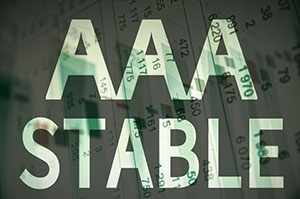Bonds: Default Risk

The two biggest risks to bonds are credit risk (default) and interest rate risk (rate fluctuations).
If you are worried about the economy, one of the ways to position yourself a little more defensively would be to own more higher credit quality bonds. This would decrease your credit risk.
Ratings of Bond Credit Quality
| Moody's Ratings | S&P Ratings | Rating Descriptions | |
| Aaa | AAA | Prime | Investment Grade |
| Aa1 Aa2 Aa3 |
AA+ AA AA- |
High Grade | |
| A1 A2 A3 |
A+ A A- |
Upper Medium Grade | |
Baa1 |
BBB+ BBB BBB- |
Lower Medium Grade | |
| Ba1 Ba2 Ba3 |
BB+ BB BB- |
Non-Investment Grade Speculative | Non-Investment Grade (high-yield /junk) |
| B1 B2 B3 |
B+ B B- |
Highly Speculative | |
| Caa1 | CCC+ | Substantial Risks | |
| Caa2 | CCC | Extremely Speculative | |
| Caa3 Ca |
CCC- CC |
Default Imminent, Recover % Slim | |
| C | D | In Default | |
We normally use U.S. investment grade bonds in the “upper medium grade” range. To reduce risk, we can move up to the “high grade” range (Aa3 / AA- and higher), but you will also likely lower your return potential.
Most high yield bond funds are typically in the risky Ba - B / BB – B grade range. There are some funds that tend to focus on the higher “non-investment grade speculative” grades if you wanted “lower risk” risky bonds.
The global bond funds we use are similar to our U.S. investment grade bonds. They are usually in the top half of the broad investment grade ratings. There are funds we can use to target the “high grade” range though. Like with U.S. investment grade bonds, there will usually be less risk and reward.

